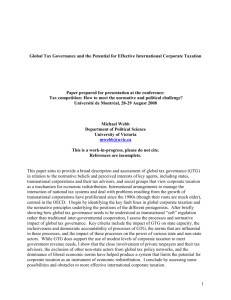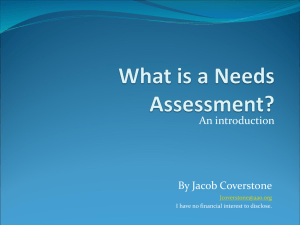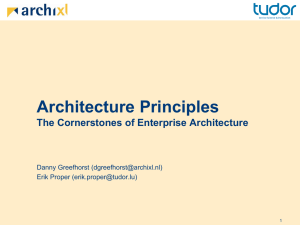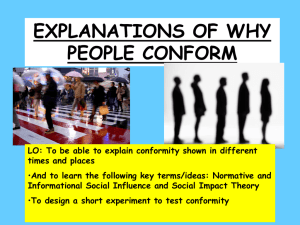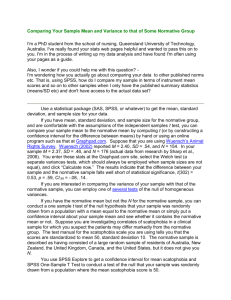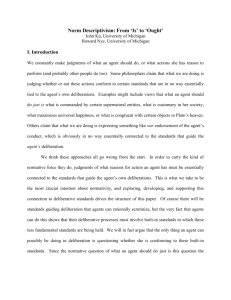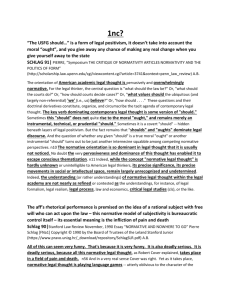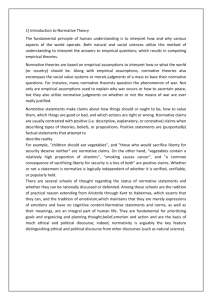Grenoble_2013_presentation_BM - VU
advertisement
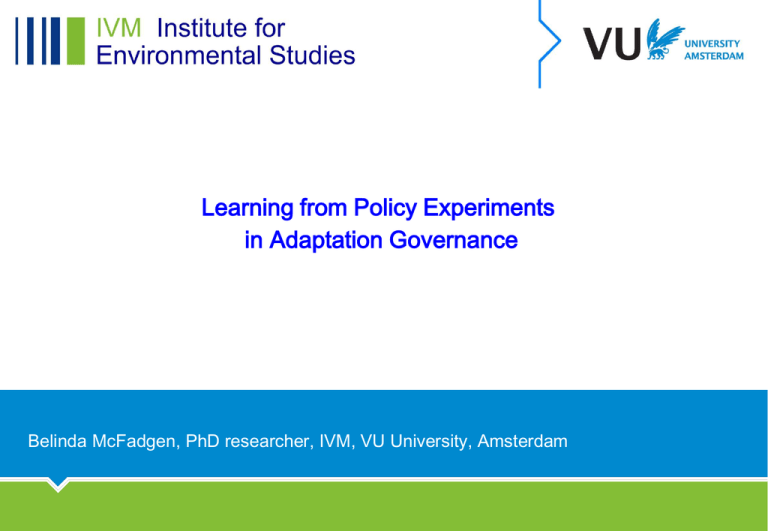
Learning from Policy Experiments in Adaptation Governance Belinda McFadgen, PhD researcher, IVM, VU University, Amsterdam Overview Research gap and questions Proposed analytical framework Application of framework to case study in the Netherlands Conclusions 2 Research context and questions Knowledge for Climate- “climate proof the Netherlands” Adaptation governance- learning policy experiments “learning our way out” “develop governance arrangements that connect new ideas” Questions: What design features are most successful at enhancing learning effects? what is learning and how can it be measured? what is a policy experiment and how can we evaluate its design features? how does design relate to learning? 3 Policy Experiments Aim: to find a definition applicable to adaptation governance • Bearing in mind the relevance to social-ecological systems! Found in the literature: • Social experiments- e.g. RCTs • Real-life experiments- e.g. scientific studies in real world context • Sustainability experiments- e.g. innovation outside traditional governance context Need for boundaries • Experimental gap • Controlled environment • Application to policy making 4 Tentative definition 1) A policy experiment attempts to test a policy innovation in a field setting, whether an innovation in technology, concept, or governance process. Testing ranges from explicit findings of cause and effect to establishing a baseline for monitoring effects in a contextualized setting; 2) An experiment provides a “protected space” by temporarily changing the institutional context; and 3) It produces evidence for policy making so it has a connection with government policy and seeks to influence it. 5 Analytical model Policy Experiment: Analysed using an institutional arrangements approach- Ostrom’s rule typology. Learning: ‘relatively enduring alterations of thought or behavioural intentions that result from experience and that are concerned with the attainment (or revision) of public policy’ (Sabatier 1987). Policy impact: Within experiment: Cognitive Normative Credible Salient Legitimate knowledge Relational learning 6 Analytical model Systematic framework for describing experiments: theory on what learning effects are expected from different designs. boundary rule access position rule initiator, facilitator information rule knowledge distribution information rule level of interaction information rule source of knowledge information rule type of knowledge choice rule power distribution at decision nodes aggregation rule how decisions are made 7 Ideal Types Technocratic experiment: • Experts as participants • Closed invitation • Produce generic, scientific information • Expert knowledge shared • Regular interaction • Even information distribution • The initiator maintains authority over each decision node • • • • • • • • Broad participation Open access Position includes facilitator Technical and reflexive knowledge Expert and lay knowledge shared Regular interaction with all participants Even information distribution All participants have full decision making powers • • • • • • • • • • • • Cognitive L- *** Normative L- *** Relational L- *** Credible K- ** Salient K- *** Legitimate K-*** Cognitive L- *** Normative LRelational L- * Credible K- *** Salient K- * Legitimate K- * Advocacy experiment: Boundary experiment: • Limited participation for those who contribute resources; • Facilitator or project manager • Limited technical knowledge • Expert and lay knowledge shared if support dominant interests • Irregular interaction • Selected information is distributed regularly to garner support • Dominant interests take decisions at each decision node. • • • • • • Cognitive L- * Normative LRelational LCredible K- * Salient K- *** Legitimate K- 8 Case study- Oosterschelde ecosystem engineer policy experiment • Location- Oosterschelde National Park, Zeeland, Southwest Netherlands. Unique for its outstanding natural features, shellfish industry, and recreation opportunities (e.g. diving). • Problem- Dike causing erosion of sand causing loss of inter-tidal flats in estuary. • Effects- Nature: habitat loss for migratory birds and other mammals; Safety: dike partially vulnerable to wave impact. • Solution- Larger project- sand nourishment; specific project- use of oyster reefs as “eco engineers”- 200m long structures that work to prevent erosion and maintain biodiversity as “living reefs. 9 Results Boundary • Main stakeholder types represented; Open access- as a requirement; • • Information • Expert and lay knowledge utilised; Regular discussion of alternative policy options Regular interaction and dissemination of scientific information • • • Position • • • Initator non-state actor, collaborative effort Facilitator role by state officials Power • • • • 3 decision nodes each with “Arnstein’s Ladder” 70% engaged early on Different actors at different nodes 10 Results Cognitive learning-*** Normative learning- * Relational learning- * Credibility- *** Salience- ** Legitimacy- ** Result- Technocratic type with boundary characteristics 11 Discussion and conclusion Surprises: • Despite reflexiveness (discussion on alternative goals) there was little normative learning • Established actor networks meant no apparent change in relational learning • Salience and legitimacy of the knowledge very high- perhaps because of the high regard for scientific knowledge Science-policy issues: • Length of experiment • Generalisability of results- introduction of oysters to other areas; meeting carrying capacity Conclusion: • Framework is broad and allows for a systematic analysis with focus on participation, information, and power and how these features relate to learning; • Recognises role of science as cornerstone of experimenting with policy. 12

